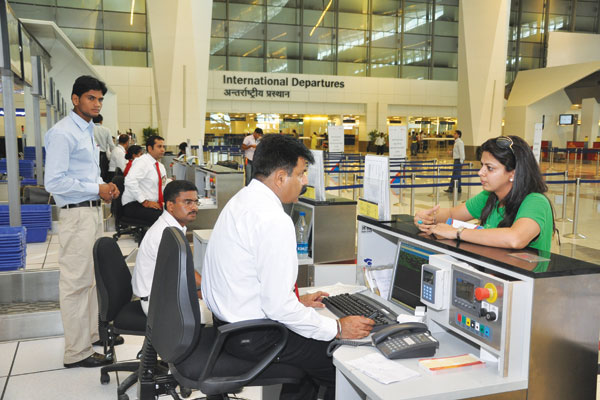
While India may not be regarded as one of the foremost nations in terms of the adoption of self-service for travellers, offsite check-in and bag drop facilities in metro stations across Delhi are expected to go live “in the next couple of months”.
Although the self-service kiosks at two of the metro stations were scheduled to enter operations on 1 May, operational readiness testing is ongoing as Delhi International Airport Limited (DIAL) – the airport’s operator – Delhi Airport Metro Pvt Ltd (DAMPL), and the government, seek to ensure that the system is entirely reliable. Air India, Jet Airways and Kingfisher will also continue to test the facilities.
“We’ve already installed the check-in kiosks at two metro stations, one at the airport station and one further afield,” explained Davesh Shukla, Vice President and CIO, Delhi International Airport.
“They have also been tested at four other stations, but as the stations themselves are not yet live we haven’t installed the equipment. There are a few issues on security that we’re currently working on. In India, security for baggage is something that is dealt with by government agencies, so we’re working on that at the moment.”
Once each of the stations on the Delhi Metro line goes live, and once the operational readiness of the offsite check-in facilities has been completed, passengers will be able to check-in, print their boarding pass and drop off their bags before arriving at the airport.
Although this is still a couple of months away, Shukla explained that the IT side of the project is already complete. “We’ve extended our network into these stations, so it becomes a part of our existing network,” he said. “It’s a complicated process because you’re essentially working with both the airport operator and the Metro operator, because they have completely separate networks.
“What we’ve done is use the station next to the airport as the interface point. We have tested the IT networks, but we need the stations to be operational and that’s something that’s beyond our control.”
Driving self-service
Once the facilities are up and running, Shukla explained that it will help to drive the adoption of new technologies and self-service in India, while also providing an enhanced experience for the increasing number of passengers passing through Delhi Indira Gandhi International Airport.
He said: “This is a new thing in India and new technology, such as web check-in, is just picking up here, whereas it is already very common in Europe. The trend is picking up here and people are realising that they don’t necessarily need to go inside the airport to check-in.
“This is another experience that is added on for the passenger and if they can check-in and drop off their bags before they even get to the airport, they don’t need to worry about queuing once they are there.”
As self-service continues to gather pace in India, Shukla was also keen to stress the importance of ensuring that the adoption of new and emerging technologies offers long-term benefits.
“In the case of new technologies, we have to ask ‘What is the lifespan of these remote check-ins, such as web check-in and mobile check-in? Does it really have a life in the long run?’,” he added. “That’s something that I think we have to consider.”







